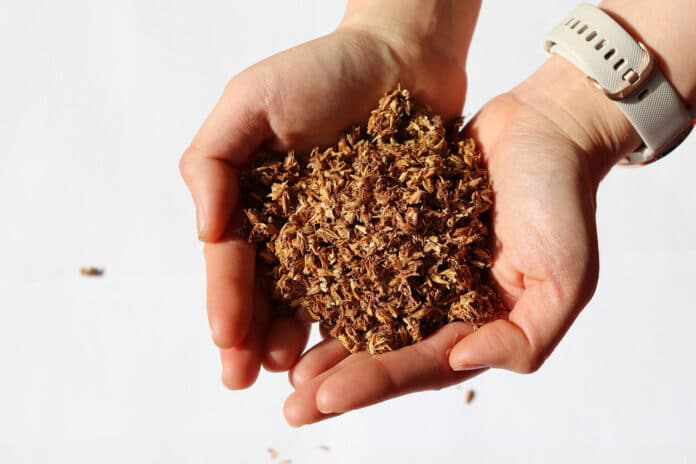The development of efficient and sustainable energy storage devices is of crucial importance for a climate-friendly future. As the number of applications for batteries and supercapacitors is continuously increasing, in the future, it will be essential to improve not only the performance of these energy storage devices but also their sustainability in terms of (renewable) sources, availability, and recyclability.
In the search for new resources, researchers now hit upon a surprising raw material – brewery waste. Chemists at Friedrich Schiller University Jena have joined forces with Spanish partners to test brewer’s spent grain as a bio-source to produce materials for electrochemical energy storage systems. On the one hand, they obtained carbon, which can be used as an electrode in batteries, and on the other hand, activated carbon as an electrode material for supercapacitors.
The Jena team developed a method in which they produced carbonaceous materials suitable for storage applications. Using the new process, the experts were able to maximize the surface area and optimize the pore size of the materials. When used as an electrode in supercapacitors, these carbons guarantee very high capacitance and make it possible to produce a device with high energy density, the researchers report.
“For some years now, we’ve been researching the suitability of different biological raw materials for realizing carbon-containing materials that we use to create energy storage devices,” explains Prof. Andrea Balducci from the University of Jena. “And brewery waste meets important criteria for this: its chemical composition is, in principle, very suitable for the applications we’re targeting.”
Brewer’s spent grains are available in large quantities, researchers say. In the European Union, for example, around 6.8 million tonnes were produced in 2019, 1.5 million tonnes of which were in Germany alone. Also, breweries are well distributed around the country, making the waste readily available, so long journeys are not necessary to obtain the raw materials.
Until now, activated carbon for supercapacitors, for example, is currently obtained mainly from coconut shells. This could change in the future, although more research is needed.
“This type of waste could be an interesting option for producing materials for supercapacitors if certain factors can be further optimized, such as the cost or the chemical composition of the raw material,” adds Balducci. “We’ll work in further projects to better understand the advantages and limitations of using this abundant material so that it might then be used more widely in the production of sustainable energy storage.”
Journal reference:
- Sandesh Darlami Magar, Christian Leibing, Juan Luis Gómez-Urbano, Rosalía Cid, Daniel Carriazo, Andrea Balducci. Brewery waste-derived activated carbon for high-performance electrochemical capacitors and lithium-ion capacitors. Electrochimica Acta, 2023; DOI: 10.1016/j.electacta.2023.142104
- Sandesh Darlami Magar, Christian Leibing, Juan Luis Gómez-Urbano, Daniel Carriazo, Andrea Balducci. Brewers’ Spent Grains-Derived Carbon as Anode for Alkali Metal-Ion Batteries. Energy Technology, 2022; DOI: 10.1002/ente.202200379
